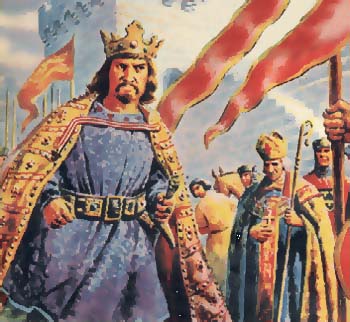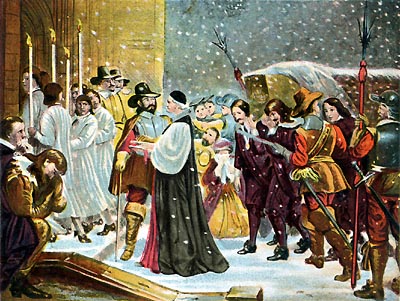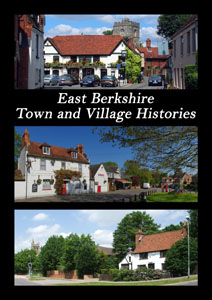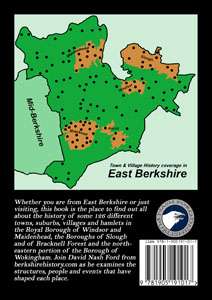 |
 |
||||||||
|
|
Windsor is of course best known for its castle, home of the British monarchy for almost a thousand years, and the largest inhabited castle in the World. Legend suggests that it was built on the site of a Celtic encampment, where King Arthur or one of his subordinates lived. The town is certainly mentioned in Arthurian literature. Traditionally, the Round Table stood atop the motte of the Round Tower. In reality, it was William the Conqueror who picked the site (which was then in the manor of Clewer) for a defensive wooden motte and bailey castle, built soon after 1066. It wasn’t until a few generations later that the Castle replaced Old Windsor as a royal palace as well. The name, meaning Winch-furnished-Riverbank, was even transferred there too. The Castle was totally rebuilt in stone during the 12th and 13th centuries, when it became a particularly popular residence of the English kings. With such an obvious centre for royal patronage and the associated supply trade, the settlement of Windsor quickly grew up between the Castle and the Thames. Activities at the Castle would swell its population at times, with builders, retainers, pilgrims or, of course, soldiers, particularly during three sieges in the dangerous political times of its early years: 1193, 1216 and 1263. Windsor’s right to hold a market, dating from before 1261, reveals the place’s status as an early town. At this date, it is recorded that the townsfolk guarded their privileges so jealously that they attacked several Reading merchants who were trying to muscle in on their territory. The poor men from Reading were physically assaulted and had their goods trampled in the mud. Free Borough status, with a merchant guild to supervise local crafts and trade, was not officially granted until 1277. As well as advantages, this charter brought unwanted residents to the town: for the County Gaol was set up in Windsor. The townsfolk objected but to no avail until 1309 when there was a gaol-break and several prisoners sought sanctuary in the parish churchyard. They were captured by force of arms and were either killed in the skirmish or hanged soon afterwards. King Edward II later deemed it prudent to remove the gaol to Wallingford. In the 13th century, the town also had a thriving Jewish community. They were forced out by officialdom in 1283, although this is recorded to have been “without doing them injury”. Once well-known landmarks in Windsor have now long since disappeared. The medieval market cross (rather like those still to be seen today in places like Chichester and Salisbury) was erected at the castle gates in 1380. Being at the intersection of several major roads in the town, it was a popular meeting place. Not far away stood the old open-arcaded market hall, in the middle of the High Street. Today’s Guildhall was built in a similar style almost on the same spot in 1687-90, by the Castle’s master mason, John Clark, under the direction of Sir Thomas Fitch. Fitch died before it was finished and, in theory, Sir Christopher Wren took his place. However, despite subsequent claims, he does not seem to have actually been involved at all. Stories of Wren building the hotel named after him also appear to be unfounded, but he was both the son and nephew of a Dean of Windsor and spent much of his childhood in the town. In 1829, the columns on the east side of the Guildhall were removed and an extension erected in their place by local builder James Bedborough. An old story tells how the burgesses of Windsor were so worried by this loss of support below the Guildhall’s upper rooms that they insisted he insert some extra columns. Bedborough complied but, to justify his confidence in his original design, he left a gap so the pillars would not reach the upper floor they were supposed to support. King Edward I was the first to make Windsor Castle a real family home for the Royals. He held his coronation feast at the castle in 1275, with jousting in the surrounding park, and four of his children were born within its walls. The tone changed in King Edward III’s reign when the Castle became the centre of preparations for the Hundred Years’ War in France. The town would have been filled with armourers, blacksmiths and carpenters. Later, many prisoners from the King’s wars, including foreign Royalty, were held at Windsor:
From 1351, King Edward III had his architect, William of Wykeham, Bishop of Winchester, almost totally rebuild Windsor Castle. This was originally under the watchful eye of three local friends: the Constable, Thomas Foxley of Foxley Green (Touchen End), and his assistants, Oliver de Bordeaux of Foliejon (Winkfield) and John Brocas of Clewer Brocas (Spital). It is said that this rebuilding was inspired by the royal prisoners who had complained about their surroundings and thus encouraged the King to reconstruct his palace – and their ransoms paid for it. Edward also wanted a new home for his foundation, the Order of the Garter: an exclusive chivalric club for his closest friends. It was so named after the King’s supposed lover, the ‘Fair Maid of Kent,’ dropped her garter at a Windsor ball. The monarch was obliged to insist his knights did not use this as an excuse to think unkindly of her and the Order made sure they remembered. In these years of plague, there were few workmen available and builders were apparently press-ganged into coming to Windsor from all over the country. On completion of the building work, King Edward and Wykeham walked through the Castle together and the King noticed a Latin inscription carved in the new stonework that he translated as “Wykeham made me”. The King, who had commissioned the work, was incensed but the wily Bishop quickly explained that it really said, “I was the making of Wykeham”. Berkshire does not have a cathedral, but St George's Chapel in Windsor is grander than many cathedrals. The first Chapel Royal within the walls of the castle was built by King Henry III and later enlarged by Edward III, in 1363, as a collegiate chapel of canons. St George, as the country’s new patron saint, was chosen for the dedication. He was neither Norman nor Anglo-Saxon, so could unite a divided England. Over the years, the place became a great centre for the worship of holy relics, which further boosted visitor numbers in the town. Whilst on campaign in 1282, King Edward I captured a Welsh cross reliquary containing part of the Crucifixion Cross and, by 1352, it was at Windsor. The Holy Roman Emperor Sigismund made a gift of St George’s heart in 1416 and this was later joined by his arm, two fingers and part of his skull. The Royal Chapel’s large collection of other relics were mostly kept in little niches in the huge reredos (or screen) behind the High Altar. The masterpiece of high medieval Gothic architecture that we see at St George’s today was erected in front of the original building by King Edward IV in the late 1470s. It was a rival to Eton College Chapel, just over the River, which had been erected by his old Wars of the Roses enemy and predecessor, Henry VI. It would have been the family mausoleum of the Yorkist Kings, had they lasted. Both men were buried at St George’s, although only King Edward’s chantry gates survive. Henry VI’s body had been transferred from Chertsey Abbey when it became clear that the saintly monarch’s remains were also attracting generous pilgrims. A later draw was the body of the 14th century Rev. John Schorne, transferred from North Marston in Buckinghamshire. He was famous for having “conjured the Devil into a boot”. Edward IV also created the Home Park, below the castle walls. It was originally the site of the Anglo-Saxon village of Orton but, by his time, had become common land, known as Underore Field. As it was so close to the Castle, the King decided to empark it for hunting deer in 1467. In Elizabethan times, there was a ‘standing’ there from which invited spectators could watch the deer being hunted by the privileged. In the reign of King Charles II, spectacular military re-enactments were performed there, such as the Siege of Maastricht by the French. The religious turmoil of King Henry VIII’s reign impacted heavily on Windsor. In 1536, during the Dissolution of the Monasteries, two Windsor men were hanged for their overtly Roman Catholic beliefs. A local priest was accused of supporting the revolutionary ‘Pilgrimage of Grace’. He was hanged on a tree near Windsor Bridge after implicating a local butcher who then suffered the same fate at the Castle Gate. Local tradition suggests the two bodies were then displayed from the top of the Curfew Tower. Towards the end of Henry’s reign, however, it was zealous Protestants who were being martyred in the town. Anthony Pearson was a popular local preacher, Henry Filmer a churchwarden and Robert Testwood a lay clerk at St George’s Chapel. They were three unlucky members of a larger Protestant movement in Windsor who were rounded up, arrested and publicly burnt to death near the plaque that commemorates them next to the King George V Memorial Fountain in Datchet Road. William Shakespeare is said to have written his ‘Merry Wives of Windsor’ at the behest of Queen Elizabeth I when she wished to see Sir John Falstaff (from ‘Henry IV’) in love. Traditionally it was first performed in the Chapter Library of the Castle around 1597, although this may have been an unofficial preview. The play features many local landmarks. The bard had Falstaff stay at the Garter Inn. A replacement building is now part of the Hart and Garter in the High Street: two inns combined as one. Shakespeare probably stayed there himself on many occasions while researching his play. His characters, Mistresses Ford and Page, were certainly from local families and the Ford house was said to be one of the buildings demolished from beneath the Castle wall almost opposite the Hart and Garter.
Read more history of
Windsor and its suburbs in David Nash Ford's book, 'East Berkshire Town and Village
Histories'.
Click for the Windsor
Stop on the Berkshire Towns
Tour
|
||||||||
| © Nash Ford Publishing 2001; Revised 2020. All Rights Reserved. | |||||||||



 Windsor
Windsor King Charles I was not a popular man in Windsor during the years prior to the Civil War. The House of Commons showed concern that he was raising forces at the Castle “without the consent of Parliament” and there was rioting in the town. Despite his hopes of making Windsor his headquarters, the King decided it was more prudent to move north. During the War, Parliament placed the Castle in the charge of Colonel Venn. Troops were billeted throughout the town by the thousand, and Lord Fairfax and Oliver Cromwell were frequent visitors while training their New Model Army in the Home Park. Royalist prisoners populated the castle. The Colonel initially stabled horses in St George’s Chapel but was later commanded by Parliament to “take care that there be no disorders and disturbances made in the Chapel at Windsor”. Despite this, many windows and monuments were smashed and furnishings looted. So much so that after the King’s execution, his fellows found it difficult to find a suitable resting place for him amongst the chaos in the Chapel. Much survived destruction, however, as did the Castle itself, to be restored and added to during the reigns of Kings Charles II,
King Charles I was not a popular man in Windsor during the years prior to the Civil War. The House of Commons showed concern that he was raising forces at the Castle “without the consent of Parliament” and there was rioting in the town. Despite his hopes of making Windsor his headquarters, the King decided it was more prudent to move north. During the War, Parliament placed the Castle in the charge of Colonel Venn. Troops were billeted throughout the town by the thousand, and Lord Fairfax and Oliver Cromwell were frequent visitors while training their New Model Army in the Home Park. Royalist prisoners populated the castle. The Colonel initially stabled horses in St George’s Chapel but was later commanded by Parliament to “take care that there be no disorders and disturbances made in the Chapel at Windsor”. Despite this, many windows and monuments were smashed and furnishings looted. So much so that after the King’s execution, his fellows found it difficult to find a suitable resting place for him amongst the chaos in the Chapel. Much survived destruction, however, as did the Castle itself, to be restored and added to during the reigns of Kings Charles II,

